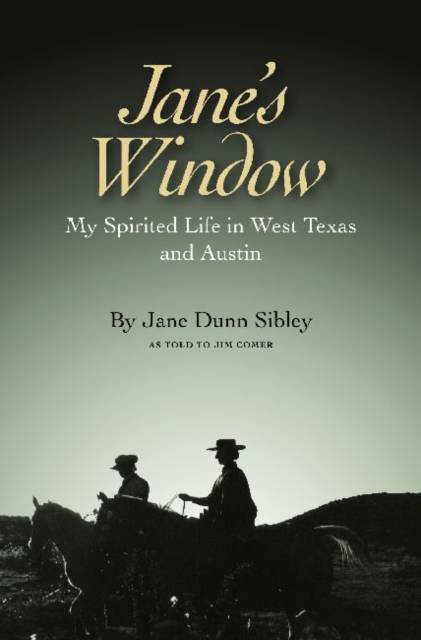
- Retrait gratuit dans votre magasin Club
- 7.000.000 titres dans notre catalogue
- Payer en toute sécurité
- Toujours un magasin près de chez vous
- Retrait gratuit dans votre magasin Club
- 7.000.000 titres dans notre catalogue
- Payer en toute sécurité
- Toujours un magasin près de chez vous
51,95 €
+ 103 points
Description
On the southern portion of what was known as the Sibley's Pezuna del Caballo (Horse's Hoof) Ranch in West Texas' Culberson County are two mountains that nearly meet, forming a gap that frames a salt flat where Indians and later, pioneers came to gather salt to preserve foodstuffs. According to the US Geological Survey, the gap that provides this breathtaking and historic view is named "Jane's Window."In Jane's Window: My Spirited Life in West Texas and Austin, Jane Dunn Sibley, the inimitable namesake of that mountain gap, gives readers a similarly enchanting view: she tells the story of a small-town West Texas girl coming into her own in Texas' capital city, where her commitment to philanthropy and the arts and her flair for fashion--epitomized by her signature buzzard feather--have made her name a society staple.Growing up during the Depression in Fort Stockton, Jane Sibley learned first-hand the value of hard work and determination. In what she describes as "a more innocent age," she experienced the "pleasant life" of a rural community with good schools, friends and neighbors, and daily dips in the Comanche Springs swimming pool. She arrived as a student at the University of Texas only ninety days before the bombing of Pearl Harbor and studied art under such luminaries as sculptor Charles Umlauf. Her enchanting stories of returning to Fort Stockton, working in the oil industry, marrying local doctor D. J. Sibley, and rearing a family evoke both her love for her origins and her clear-eyed aspirations.The Sibleys never discussed the details of their good fortune, and, to their gratitude, no one ever asked. In Jane's Window, Sibley narrates travel adventures, shares vignettes of famous visitors, and tells of her favorite causes, among which the Austin Symphony and the preservation of lower Pecos prehistoric rock art are especially prominent.Peopled with vivid characters and told in Sibley's uniquely down-to-earth and humorous manner, Jane's Window paints a portrait of a life filled to the brim with events both heartwarming and heartbreaking.
Spécifications
Parties prenantes
- Auteur(s) :
- Editeur:
Contenu
- Nombre de pages :
- 392
- Langue:
- Anglais
- Collection :
- Tome:
- n° 14
Caractéristiques
- EAN:
- 9781603448024
- Date de parution :
- 02-04-13
- Format:
- Livre relié
- Format numérique:
- Genaaid
- Dimensions :
- 168 mm x 242 mm
- Poids :
- 820 g







